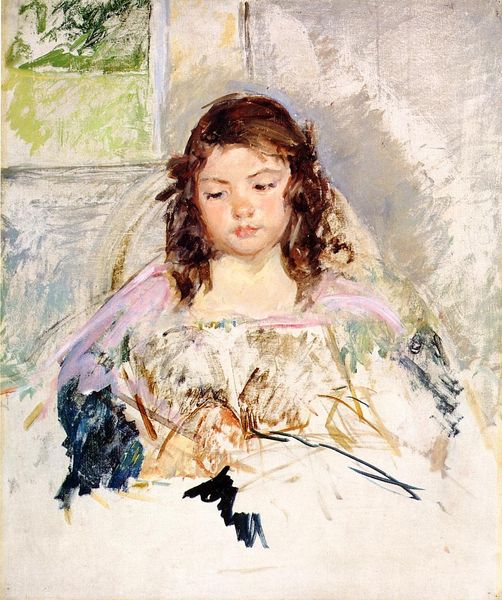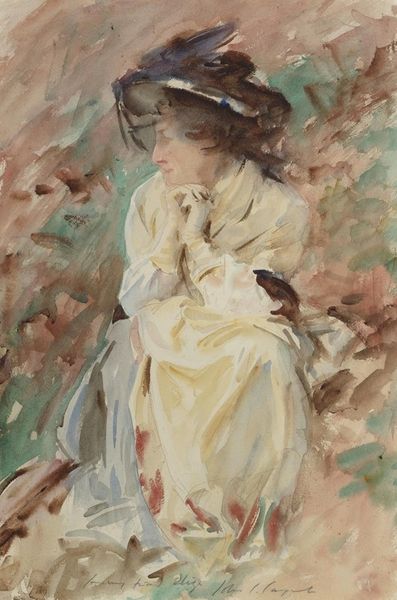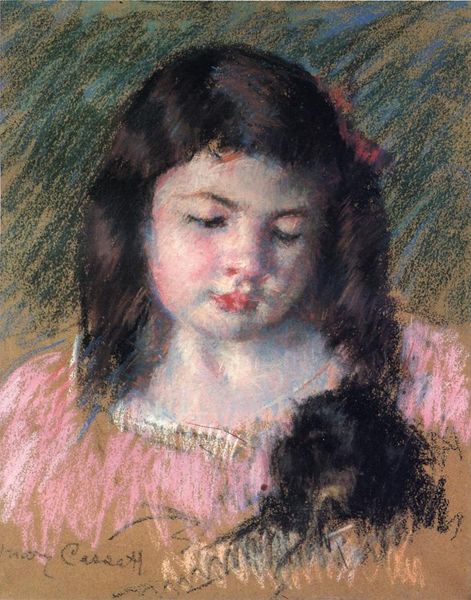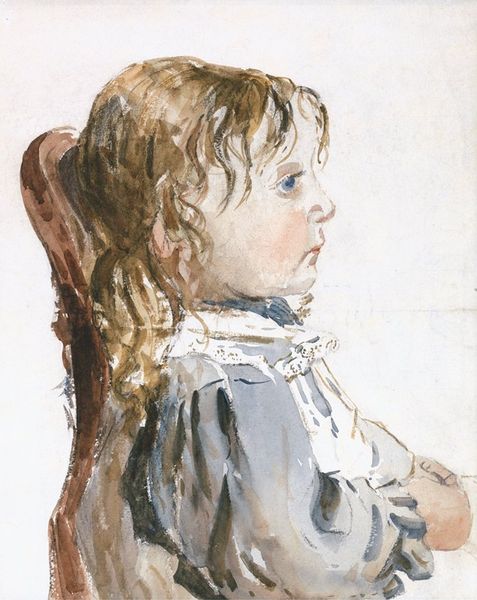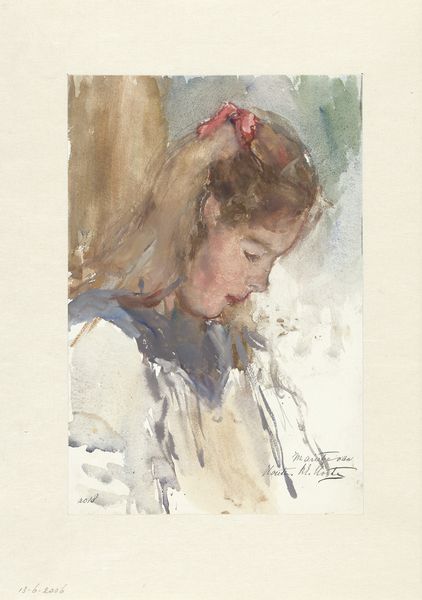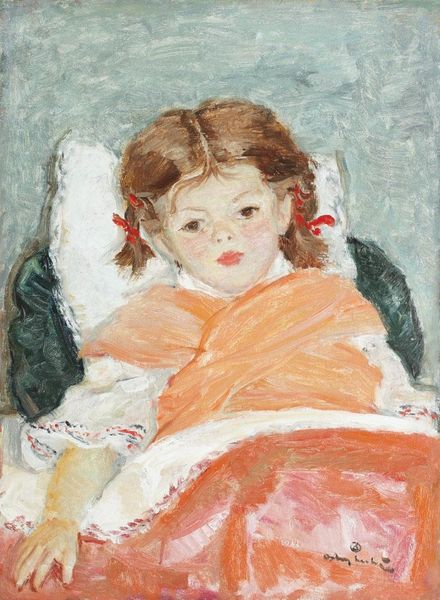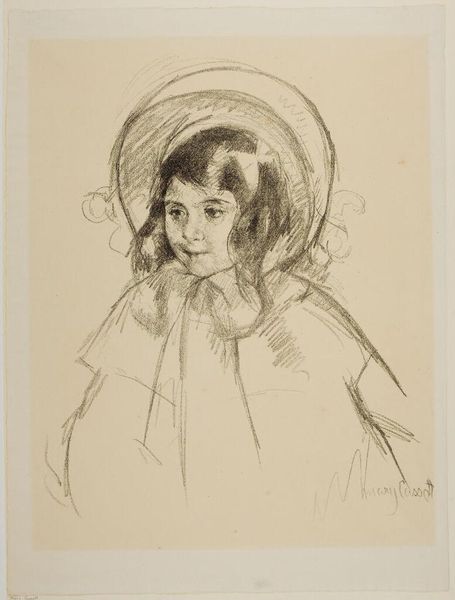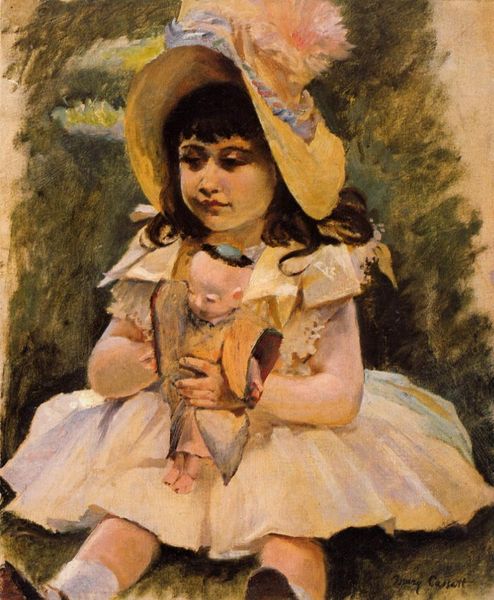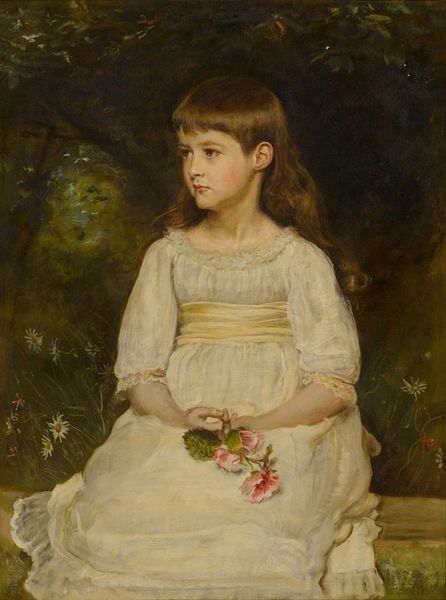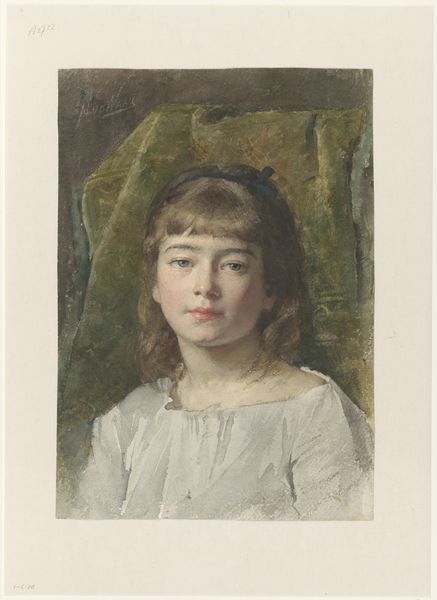
Copyright: Public Domain: Artvee
Curator: This watercolor from 1909 is called "Françoise Sewing" by Mary Cassatt. Editor: Immediately, there’s a gentleness here that’s really captivating, almost a whisper of light and shadow. It feels so personal. Curator: Cassatt was a master of intimate scenes, particularly domestic portraits of women. It's tempting to see this work through a feminist lens, considering how she consciously presented women outside the typical male gaze of the period. Editor: Absolutely. The everyday act of sewing— elevated. I’m drawn to how Françoise's downcast gaze emphasizes this interior world. It’s subtle, but a powerful stance against a more objectified representation. There's a certain...ordinariness that's incredibly poignant. Curator: It's almost like we’re intruding on a private moment. But there is this radical proposition – to grant dignity and interest to the lives of women engaged in these daily acts. Editor: You know, the sketch-like quality really reinforces that. She's not posed or perfect; it’s just Françoise, in a state of gentle focus. I think, in viewing it, you immediately consider all the untold narratives of girls at that age in that position. It is quiet rebellion to find worth in that quiet focus. Curator: It’s interesting you bring that up, because she has this gorgeous watercolor wash technique to convey that kind of everyday intimacy. I think her decision to do it in watercolor instead of oils, which would be more traditionally considered to convey higher status and higher dignity, is very intentional. Editor: Precisely! And that very lightness of the watercolour allows a certain softness and openness. It really helps convey a kind of quiet power. Curator: It does ask a viewer, "What kind of labor is this? And how is this labour presented?” which many male artists in the time failed to question. Editor: And who is allowed this kind of tender portrayal. Cassatt definitely gives us a fresh viewpoint in her quiet presentation of a woman who seems both self-possessed and pensive. Curator: What lingers with me most is that suggestion of interiority, this sense of being granted access to a moment usually unseen, a space where value and reflection meet. Editor: For me, it’s how Cassatt elevates that seemingly simple act, almost turning the ordinary into something profoundly dignified. It makes me think about all the hidden narratives and unseen labour.
Comments
No comments
Be the first to comment and join the conversation on the ultimate creative platform.
